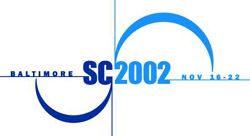Online "Intermediate MPI""" Course Being Released for Public Use"
For the first time, an online "Intermediate MPI" course is being released for public use. OSC and the Partners for Advanced Computational Services (PACS) created the course to be offered on the National Computational Science Alliance (NCSA) server after a series of successful introductory MPI courses.
Click here to go to the course website.
 An audio version of the Greater Columbus Free-Net User's Guide is now distributed through the Central Ohio Radio Reading Service, Inc. (CORRS). The User's Guide audio version is a set of six audio cassette tapes and is a collaborative effort of
An audio version of the Greater Columbus Free-Net User's Guide is now distributed through the Central Ohio Radio Reading Service, Inc. (CORRS). The User's Guide audio version is a set of six audio cassette tapes and is a collaborative effort of  For the past 14 years, OSC (Ohio Supercomputer Center) has made a place for itself in the world of high performance networking and computing. This year will be no exception when OSC showcases recent projects at Supercomputing 2002 (SC2002), an annual weeklong national supercomputing conference. SC2002 will be held at the Baltimore Convention Center on November 16-22.
For the past 14 years, OSC (Ohio Supercomputer Center) has made a place for itself in the world of high performance networking and computing. This year will be no exception when OSC showcases recent projects at Supercomputing 2002 (SC2002), an annual weeklong national supercomputing conference. SC2002 will be held at the Baltimore Convention Center on November 16-22.